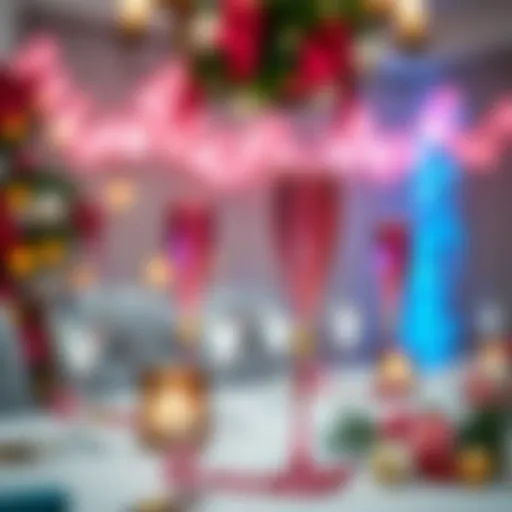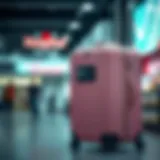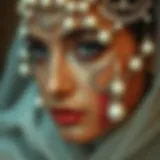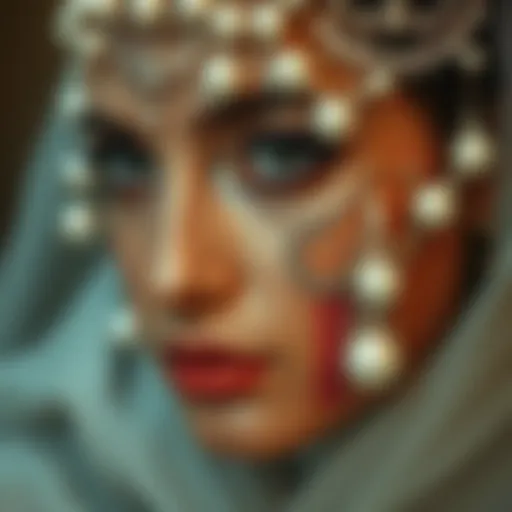Faux Dread: Modern Fabric Innovations in Fashion
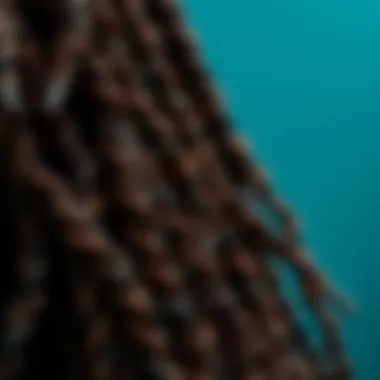
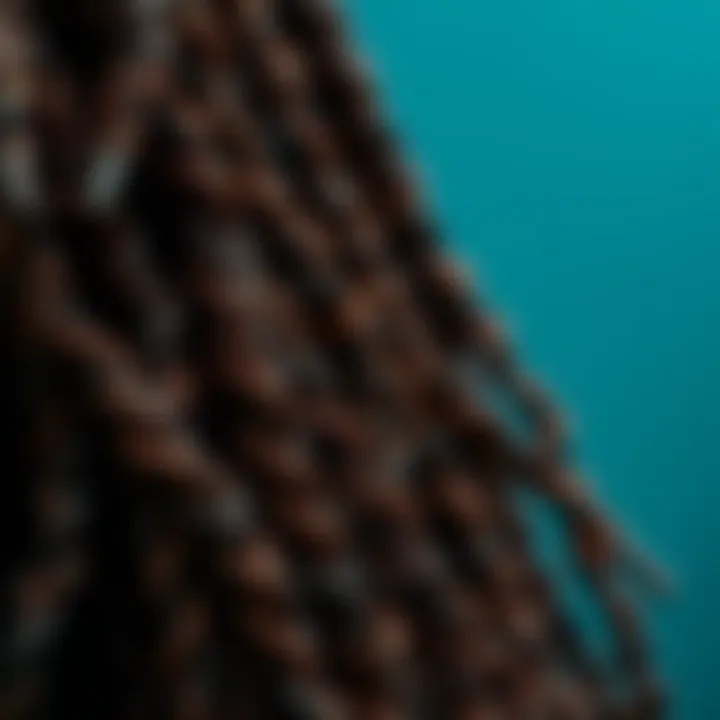
Intro
The world of fashion is a rollercoaster of trends, and one that has captured significant attention in recent years is faux dread. This style choice, characterized by its intricate fabric work that mimics traditional dreadlocks, opens up a realm of possibilities for those wishing to express their individuality without the long-term commitment of natural dreads. Faux dread has evolved from a niche pursuit embraced by a select few, to a mainstream option adopted by a diverse crowd seeking contemporary flair.
In this exploration, we will take a closer look at the fabric materials typically used in the construction of faux dread, some guidelines for caring for these unique textiles, and a few tips on styling and pairing outfits that incorporate this eye-catching design. Additionally, we'll address the thought of sustainability as we tread through this faux landscape – because in an age where eco-friendly fashion is no longer just a trend, understanding the implications of material choice becomes ever more crucial.
Let’s jump right into the first important concept: the fabrics that are foundational to faux dread styles.
Fabric Knowledge
Types of Fabrics
When it comes to faux dread, the materials involved typically range from synthetic fibers to natural alternatives. Here are a few key players in the faux dread fabric world:
- Acrylic: A highly popular choice, acrylic is lightweight and often mimics the appearance of natural dreadlocks. Its vibrant color options make it appealing for those wanting to add a splash of personality. However, it’s crucial to remember that acrylic is not as breathable as some other options.
- Cotton: For those more inclined towards natural fibers, cotton provides a soft feel. It’s often blended with other materials to enhance durability while allowing for comfort.
- Polyester Blends: This fabric type combines the resilience of polyester with the softness of other fibers. It’s versatile and allows for a range of textures, making it adaptable for different styling needs.
- Wool: Though less common, some high-end faux dread options include wool, particularly when artisans aim for a rustic aesthetic. Wool is known for its warmth and durability but may require special care for maintenance.
Understanding the different fabrics helps in making informed decisions. Choosing a fabric based on your lifestyle and aesthetic preference can be a game changer.
How to Care for Different Fabrics
Care techniques can vary substantially based on fabric type, so let’s break it down:
- Acrylic: Generally, a gentle hand wash in cool water will suffice. Lay flat to dry to avoid stretching, as acrylic can warp when exposed to heat.
- Cotton: This fabric is robust and can handle machine washing; however, using gentle cycles and cold water is recommended to prevent shrinkage. Ironing cotton faux dread is also an option, but do allow it to cool down to maintain its shape.
- Polyester Blends: Much like acrylic, these require a gentle wash. Avoid high heat when drying, as it may damage the fibers.
- Wool: This one needs a bit more love. Hand washing is ideal, and using a special wool detergent can help maintain its integrity. Always air dry, keeping it away from the sun.
By understanding these fabric nuances, you set yourself on the right path to making faux dread a staple in your attire.
"The right fabric choice can elevate not just your look, but also your confidence in wearing it."
As we delve deeper, styling tips will be essential. Let’s focus on how to curate the ideal looks to showcase faux dread to its fullest potential.
Understanding Faux Dread
In the fashion landscape, faux dread plays a rather fascinating role. It sits at the intersection of style and innovation, offering a way for individuals to express themselves without committing to traditional dreadlocks. Faux dread brings it all together—flexibility, style, and a touch of culture—making it a significant consideration for anyone looking to diversify their wardrobe. With conversations surrounding cultural appropriation, the material's impact on the environment, and personal identity, faux dread is more than just a trend—it's a statement. Understanding this concept in-depth allows fashion enthusiasts, stylists, and retailers to navigate the rich tapestry of modern looks with an informed perspective.
Defining Faux Dread
Faux dread refers to synthetic or semi-synthetic materials that mimic the look of traditional dreadlocks. They come in various textures, colors, and lengths, allowing for a customized aesthetic that can radically transform one’s look. Faux dreads can be installed in numerous ways, typically through braiding, looping, or twisting real hair, making them accessible to various hair types.
People often embrace faux dread for its ease of use—compared to growing and maintaining natural dreadlocks, these alternatives offer a more manageable, versatile solution. This innovative approach to styling has generated excitement among people seeking to experiment with their appearance without the lengthy commitment required for natural dreads.
Historical Context
The origins of faux dread
To understand faux dread, one must first acknowledge its roots. The first instances of synthetic dreads emerged in the late 20th century, coinciding with the rise of subcultures interested in alternative fashion. By using materials like Kanekalon—common in synthetic hair—it was possible to create dreads that didn’t require the same lengthy upkeep as natural ones. The allure of faux dread lies in its flexibility, providing an opportunity for experimentation and creativity. In the world of fashion, this translates to rampant individuality that draws upon historical roots while pushing boundaries.
The cultural significance of dreadlocks
Dreadlocks have long been more than just a hairstyle; they carry profound cultural significance, particularly in African communities. This hairstyle has often represented spiritual beliefs, identity, and resistance. However, it's essential to approach this history sensitively. Faux dread brings a layer of complexity, enabling users to indulge in this aesthetic without embracing the cultural complexities that come with natural locks.
As faux dreads become more prevalent, it becomes crucial to discuss them in the context of cultural respect and understanding. The desire to wear dreads—real or faux—should come with a mindfulness about their origins and implications, steering clear of notions of appropriation and instead embracing appreciation.
Transition to faux materials
The transition to faux materials reflects a broader trend toward sustainability in fashion. Many individuals opt for faux dread not just for aesthetics, but also due to ethical concerns associated with traditional fashion practices. Faux dreads provide a viable alternative that is often seen as more socially responsible.
These materials typically require less water and energy in their production processes compared to the natural counterparts, thus presenting a more sustainable choice. However, it’s crucial to remain cautious. Some synthetic fabrics contribute to microplastic pollution, raising questions about the long-term environmental impact.
Faux dreads present a solution to incorporating elements of culture and style while also moving towards more eco-conscious choices. Understanding this transition enhances one's approach to fashion, encouraging the selection of alternatives that resonate not just with personal style but also with broader societal values.
Material Composition
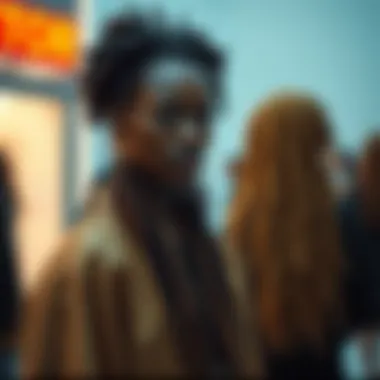
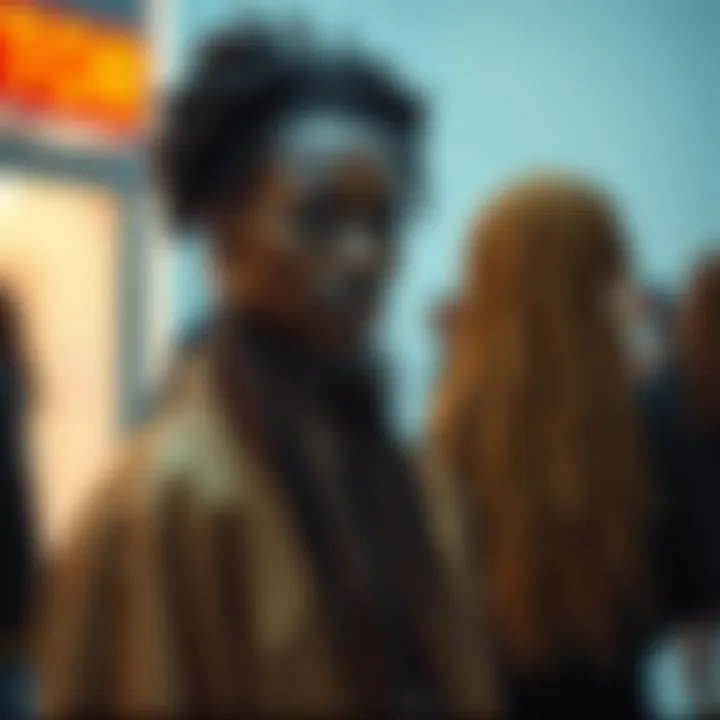
Understanding the material composition of faux dread is fundamental to appreciating its growing prominence in the fashion landscape. Faux dread offers versatility and style, but the choice of materials influences everything from texture to wearability. This section navigates through synthetic fibers and natural alternatives, emphasizing their distinct roles and contributions to the wearer's experience.
Synthetic Fibers
Characteristics of synthetic fibers
Synthetic fibers have become a cornerstone in the production of faux dread. One key aspect is their durability. They are engineered to withstand daily wear, maintaining their appearance over time. Unlike natural hair, which can wear out, synthetic options resist fading and moisture damage. Moreover, they're generally more forgiving when it comes to styling since they can hold shapes like curls or waves better than many natural fibers. This stability makes them a popular choice in the faux dread world. However, while they often mimic the look of real dreadlocks, they can lack the natural movement and feel, which some users may find off-putting.
Common materials used in faux dread
When discussing common materials used in faux dread, a few names stand out prominently. For instance, Kanekalon is widely used for synthetic dreadlocks due to its lightweight nature and vibrant color variety. Another frequently mentioned material is Toyokalon. It is less common but offers a silkier texture and glossier finish. Each of these materials plays a significant role, providing options that cater to different aesthetic preferences.
However, a downside is that some synthetic materials can irritate the scalp, particularly if worn for extended periods. Balancing comfort and style can be a bit of a tightrope act for many.
Natural Alternatives
Exploring plant-based materials
The introduction of plant-based materials into the faux dread scene has opened up new avenues for those seeking an alternative to synthetic fibers. Materials like bamboo and hemp are gaining traction due to their biodegradable nature and softer feel. These fibers not only provide a more natural texture, but they also resonate with eco-conscious consumers. A notable feature is that they often require less processing, thereby reducing the environmental footprint associated with production. However, they can sometimes lack the durability of synthetic options, which may deter some from making the switch.
Sustainability considerations
Sustainability considerations become pivotal in discussions around faux dread, especially with increased consumer awareness about environmental impact. Opting for sustainable materials can greatly diminish one’s ecological footprint. For example, opting for a dreadlock made from sustainable sources reinforces a commitment to reducing textile waste.
While natural fabrics may seem appealing on the surface, they come with their own set of challenges, such as potential limitations in color retention and flexibility compared to synthetic alternatives.
All in all, the choices in materials — whether synthetic or natural — significantly shape the faux dread landscape. Fabrics significantly impact not only how the faux dreads look and feel, but they also carry greater implications regarding sustainability and ethical sourcing.
Styling Faux Dread
The art of styling faux dread plays a significant role in framing one’s identity and personal expression. As faux dread gains traction in contemporary fashion, it becomes crucial to understand its versatility in wardrobe integration. This section provides insights into how faux dread can complement various outfits and what accessories can heighten its appeal. Not only does style influence perception, but it creates an opportunity for individuals to embody a mix of culture and creativity without the long-term commitment of traditional dreadlocks.
Compatibility with Outfits
Casual looks
When discussing casual looks, faux dread offers an effortless yet striking aesthetic. For many, this look can evoke a sense of free spirit and laid-back vibes. Whether it's paired with distressed denim or a flowing maxi skirt, casual styles create an approachable aura that is easy to pull off. The key characteristic of this approach is versatility. Faux dreads can effortlessly enhance a simple t-shirt and jeans ensemble, adding a dash of flair without overwhelming the outfit.
One of the main advantages of casual faux dread styles is their ability to transition seamlessly from day to night. A well-styled faux dread can lend itself to an array of occasions, from brunch with friends to a late-night hangout. However, one disadvantage might be the perception of being too informal for certain settings. It’s essential to consider the context when opting for this look, especially in environments where a more polished appearance is expected.
Formal adaptations
On the flip side, faux dread can adapt quite impressively to formal settings as well, although this requires a bit more thoughtfulness in styling. The key characteristic of formal adaptations is sophistication—finding a balance between traditional elegance and modern flair. Imagine faux dreads styled neatly, perhaps tucked into a sleek chignon or adorned with subtle hair pins that complement an evening gown. This approach showcases a unique character while maintaining decorum, making faux dread a popular choice for upscale events like weddings or galas.
The unique feature of formal adaptations lies in the framing of facial features. By lifting faux dreads from the face, one can highlight makeup and overall outfit design effectively. However, a potential difficulty could be the misconception that faux dread do not belong in formal settings. To counteract this opinion, proper styling is crucial—ensuring that the overall appearance is cohesive.
Accessorizing Faux Dread
Accessorizing faux dread is where creativity truly shines, allowing individuals to further express their personalities and styles. This can be one of the most enjoyable aspects of wearing fake dreads as it opens doors to various jewelry combinations and headwear, aligning with the user’s preferences.
Jewelry options
When it comes to jewelry, the combination of faux dread and accessories can create eye-catching looks that make heads turn. Consider adding beads or shells, which are often interwoven into the dreads to invoke a bohemian feel. This trend harks back to cultural roots while staying stylish. The beneficial aspect here is personal expression; each addition can signify something individual to the wearer. The unique feature of using jewelry with faux dread is the opportunity for customization. However, it's important to strike a balance; too much can become overwhelming. Thoughtful, strategic placement of jewelry can enhance the overall visual appeal without distracting from the hairstyle.
Hats and headbands
Hats and headbands represent another layer of accessorizing faux dread. A wide-brimmed hat not only garners attention but also provides a sense of intrigue. This accessory can enhance the overall outfit while making a fashionable statement. A key feature is protection from the elements, ensuring that faux dreads remain looking fresh. Headbands, on the other hand, can be versatile, offering styles that range from rigid sporty looks to intricate, bohemian designs. They can hold dreads back neatly while still showcasing their unique identity.
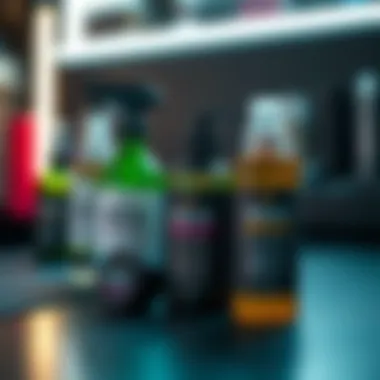
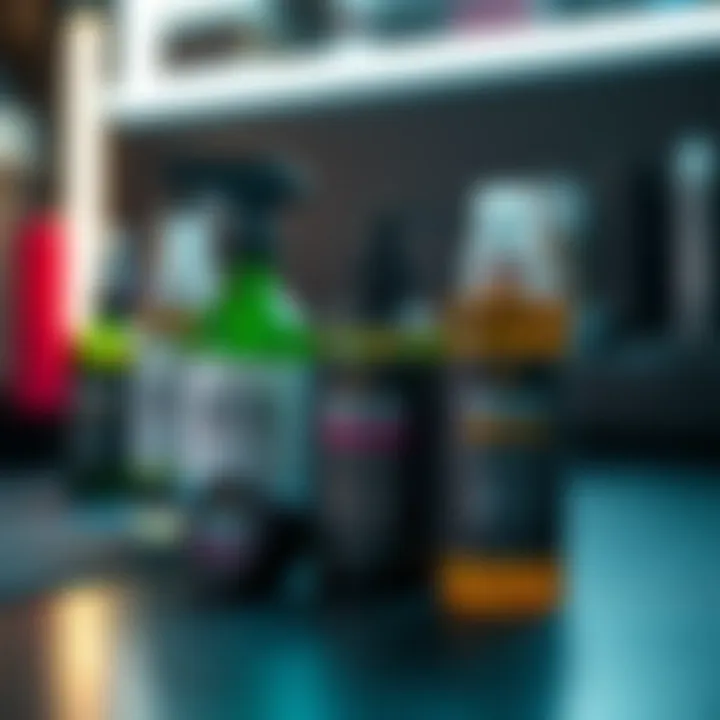
"The beauty of faux dread lies in its ability to mirror the wearer’s personality while allowing for creativity and self-expression."
Yet, hats and headbands can also present challenges, such as maintaining comfort throughout the day. Some headbands may shift or become uncomfortable over time, so choosing the right kind is crucial for ensuring a seamless experience throughout the day.
In summary, styling faux dread can be variously tailored, whether for casual outings or formal gatherings. This section emphasizes the significance of compatibility with outfits and effective accessorizing to fully embrace the aesthetic. Engaging with different combinations of attire and adornments opens up worlds of creative exploration and personal identity, fortifying the modern fabric choices in the fashion landscape.
Maintenance Practices
Maintaining faux dread is crucial for preserving the integrity and aesthetic appeal of these stylish accessories. Faux dread, with its diverse materials, requires specific care to extend its lifespan and keep it looking fresh and vibrant. This section delves into the essentials of maintaining faux dread, discussing how proper cleaning, storage, and care can significantly affect the performance and appearance of these trendy elements in modern fashion.
Cleaning Faux Dread
Recommended cleaning products
When it comes to cleaning faux dread, selecting the right products makes all the difference. Gentle cleaners designed specifically for synthetic fibers are typically recommended. These products often lack harsh chemicals that can wear down materials over time, ensuring longevity. For example, sulfate-free shampoos not only cleanse but also help maintain the color and texture of faux dreads.
Many users find that products like co-wash formulations are beneficial, as these are designed to clean while retaining moisture, which is key to preventing brittleness. They have a unique feature of being less stripping than traditional shampoos. However, it’s important to remember that not all cleaning products may suit every type of faux fear material. Conducting a patch test with a small sample of the faux dread might be wise before diving into a full clean.
Frequency of maintenance
The frequency of cleaning faux dread can vary based on lifestyle and wear. For those who wear faux dread daily, a cleaning regimen every two to three weeks is recommended. This timeframe keeps buildup from styling products at bay and prevents any potential odors from setting in.
However, for individuals who wear them more sporadically, adjusting the frequency is just fine. A unique aspect of this maintenance practice is that it allows personal lifestyle to dictate care routines. Cleaning too often might unnecessary strip fibers of their color, while waiting too long means potential for more extensive cleaning sessions down the line. A watchful eye can prevent both extremes, making it a balanced approach.
Storage and Care
Proper storage techniques
Storing faux dread properly is essential to prevent tangling and damage. The biggest challenge in storage is often tangling, which can lead to time-consuming detangling sessions. One effective method involves hanging them on a decorative wall hook or placing them in a breathable storage bag instead of squishing them into drawers. This helps maintain the shape and prevents kinks.
Store them away from direct sunlight, as UV rays can cause colors to fade. Keeping faux dread in a cool, dry place ensures a longer lifespan, allowing them to stay vibrant and intact for numerous wears.
Preventing damage to materials
Preventing damage to faux dread materials requires attentiveness and care. One main consideration is avoiding environments where moisture and heat can wreak havoc—like saunas or overly humid conditions. Heat can warp and damage synthetic materials, while moisture can lead to mold or mildew growth.
In terms of handling, being gentle while brushing and styling is critical. Using wide-tooth combs can help maintain the fibers without pulling or breaking them. This kind of preventive care can save users a lot of hassle down the road, allowing faux dread to serve as a fashionable staple for an extended period without requiring excessive replacement.
“The key to enjoying faux dread lies in the details of care and maintenance. They are not just fashion statements but investments.”
By embracing these maintenance practices, individuals can appreciate the longevity and beauty of their faux dread, seamlessly integrating them into their wardrobe while honoring their unique character.
Faux Dread in the Fashion Industry
Faux dread has established itself as more than a mere trend in the fashion industry; it has evolved into a significant player influencing styles and consumer choices. As we navigate through these modern fabric choices, understanding faux dread's place in fashion illuminates broader conversations around identity, sustainability, and creativity. Faux dread signifies not just a hairstyle or accessory but a statement reflecting individual style and cultural appreciation. The importance of faux dread in fashion lies in its adaptability, its roots in artistic expression, and its ability to merge with societal shifts.
Trends and Innovations
Collaboration with designers
Collaboration between designers and faux dread artisans has sparked creativity in the field. Designers often fuse their vision with the unique textures and colors available in faux dread, leading to imaginative collections. This collaboration is not just about aesthetics; it brings attention to craftsmanship and skill in working with synthetic materials. By involving designers, faux dread can showcase its versatility in various settings, from high fashion runways to street style. The unique feature here involves an exchange of ideas, with designers challenging traditional notions while artisans push boundaries. However, it can be a double-edged sword: while collaboration fuels innovation, it can sometimes dilute the original cultural contexts that inspire faux dread.
Adoption by mainstream brands
Many mainstream brands have begun adopting faux dread, making it a staple in their collections. This trend reflects a key characteristic of inclusivity, making this fiber accessible to a wider audience. Brands recognize the appeal of faux dread in its promise of an edgy, stylish look without the commitment of natural dreadlocks. A significant advantage of this adoption is the possibility for ethical products, appealing to consumers who prioritize sustainability. However, while the popularity of mainstream acceptance brings visibility, it also raises questions about authenticity and the cultural connotations of faux dread.
Consumer Perception
Market demand analysis
A thorough analysis of market demand reveals a growing interest in faux dread among consumers. The key characteristic driving this demand is the desire for unique self-expression. Shoppers are increasingly valuing individuality in their fashion choices, and faux dread offers a way to stand out without the long-term commitment associated with natural hairstyles. This demand allows brands to expand their offerings, resulting in more innovative options. However, understanding the nuances of this trend is crucial. Over-saturation can lead to consumer fatigue, which diminishes the appeal of faux dread in the long run.
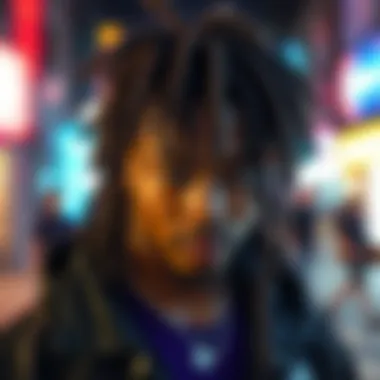

Shifts in consumer values
Shifts in consumer values significantly impact the relevance of faux dread in fashion today. Today’s consumers increasingly prioritize sustainability and ethical practices in their purchasing decisions. There is a surge in demand for products that align with personal and environmental ethics. Faux dread, with its synthetic fibers, offers a solution but also faces scrutiny about its environmental footprint. The challenge lies in educating consumers about the impact of synthetic materials versus traditional methods. The unique feature of this shift is the raw, transparent dialogue demanding brands be accountable for their production processes. As faux dread continues to evolve, embracing these shifts is key for maintaining its position in an ever-changing market.
Ethical Considerations
The discussion surrounding faux dread extends well beyond simple fashion choices. It delves into ethical territory where two significant aspects stand tall: cultural appropriation and sustainability challenges. Engaging in a dialogue about these issues allows individuals and designers alike to navigate the complex fabric of societal values while cultivating a business model that admires both style and substance.
Cultural Appropriation
Understanding the implications
Cultural appropriation raises eyebrows in today’s fashion scene, particularly when it comes to faux dread. This phenomenon influences not just the individual wearing faux dreadlocks, but also reflects broader societal attitudes towards cultural identity and recognition. In understanding the implications, it’s crucial to recognize that borrowing elements from cultures, especially marginalized ones, carries a significant weight. Some view the adoption of faux dread as a celebration, while others see it as a form of erasure. This duality can make faux dread a bittersweet choice for those who embrace it without acknowledging its roots. The unique feature here is the emotional tether it holds—both for those who wear it and those whose culture is referenced.
On one hand, faux dread provides a versatile styling avenue and serves as a canvas for self-expression. On the other, if worn without respect to its origins, it risks trivializing a cultural symbol. It may bemuse fashion enthusiasts who appreciate its aesthetic but overlook its profound context.
Respecting cultural integrity
The concept of respecting cultural integrity is paramount in conversations around faux dread. Adopting the aesthetics while appreciating the history behind it ensures a respectful practice that values the cultures from which these styles are drawn. Those who take care to learn about and honor the traditions associated with dreadlocks are generally seen as more mindful consumers. The delicate line between appreciation and appropriation can be navigated more easily with cultural insight.
By fostering dialogue, wearers of faux dread can advocate for authentic representation in fashion, ensuring that the original meanings remain alive rather than flattened into mere trends. This respectful approach is beneficial for creating inclusive fashion narratives that honor diversity.
Sustainability Challenges
Moving beyond culture, sustainability presents another ethical concern within the faux dread discourse. The rise of synthetic materials poses questions regarding their environmental footprint.
Environmental impact of synthetic fibers
When talking about the environmental impact of synthetic fibers, it shines a glaring light on modern textile manufacturing. These materials often come with high energy costs, non-biodegradability, and significant pollution during production. The alarming characteristic of synthetic fibers is their pervasive use, often fueled by the demand for low-cost, high-style alternatives.
One significant disadvantage of these materials is their contribution to microplastic pollution, with tiny fibers shedding during washing and infiltrating waterways. This creates a ripple effect—one that fashion enthusiasts must confront as they navigate their choices. It poses a pressing dilemma: how to balance aesthetic appeal with environmental responsibility.
Exploring eco-friendly alternatives
In response to these pressing issues, exploring eco-friendly alternatives becomes an essential step in redefining the faux dread narrative. Innovations in this area include sustainably sourced organic fibers and biodegradable materials that maintain the aesthetic appeal without the heavy environmental toll. Unique features such as these alternatives often highlight local craftsmanship and reduce carbon footprints significantly.
However, the shift to more sustainable options can be limited by price and availability, which pose challenges to both consumers and manufacturers. Designers who tap into eco-friendly strategies have the potential to reshape the market for faux dread, attracting a conscientious audience willing to pay a premium for ethical fashion choices.
Engaging in dialogue around these ethical considerations positions faux dread not just as a stylish statement, but as a movement towards more ethically responsible fashion choices. In the bustling world of textiles, it’s crucial for everyone involved—designers, wearers, and even retailers—to ponder the far-reaching implications of what they choose to bring to the forefront.
End and Future Outlook
The exploration of faux dreads signifies a turning point in contemporary fashion. As we take a step back and reflect on the insights shared, it’s clear that faux dread has evolved from a niche product to a staple in the fashion industry. The importance of this development lies not only in versatility but also in embracing an inclusive aesthetic that caters to a wide variety of consumers.
Summarizing Key Insights
Throughout the article, several critical points have emerged that demonstrate the significance of faux dread within the textile arena:
- Material Variety: Faux dread allows for creative expression through a range of materials, catering to individual preferences without cultural appropriation concerns.
- Styling Versatility: With endless options for styling and accessorizing, faux dread suits both casual and formal contexts, making it an appealing choice for many.
- Maintenance: Clear guidelines on the maintenance of faux dreads have been presented, highlighting the ease of care compared to traditional dreadlocks.
This synthesis of information reveals that faux dread is not merely a passing trend but has solidified its place in the wardrobes of style-conscious individuals. Its ability to align with both personal identity and fashion innovation makes it a powerful component of modern style.
The Future of Faux Dread in Fashion
Potential for Innovation
The potential for innovation in faux dread is immense. As designers delve deeper into what synthetic materials can offer, the technology behind fabric development continues to advance. New textures, colors, and compositions can emerge, allowing fashion designers to create faux dreads that not only mimic the look but also enhance comfort and wearability. For instance, advancements in biodegradable synthetic fibers could pave the way for sustainable choices that meet consumer demand for eco-conscious fashion. This advancement is an attractive feature for consumers seeking not just style but values that align with their beliefs.
Adapting to Consumer Preferences
Adapting to consumer preferences is another critical aspect shaping the future of faux dread. Fashion brands are becoming increasingly aware that consumers want products that resonate with their individual styles and values. Customization options, like selecting colors or even lengths, enhance the appeal of faux dread. Moreover, social media is a driving force in this adaptation as influencers and everyday users showcase their unique styles with faux dreads. This visibility encourages broader acceptance and creates a marketplace conducive to experimentation and personalization.
"Fashion is the armor to survive the reality of everyday life." – Bill Cunningham
For more insights into the fusion of fashion and culture, consider checking out reliable educational resources like Britannica or Reddit's fashion threads.
In these evolving times, it's not just about wearing faux dreads; it's about representing a shift in how we view self-expression through fashion.







